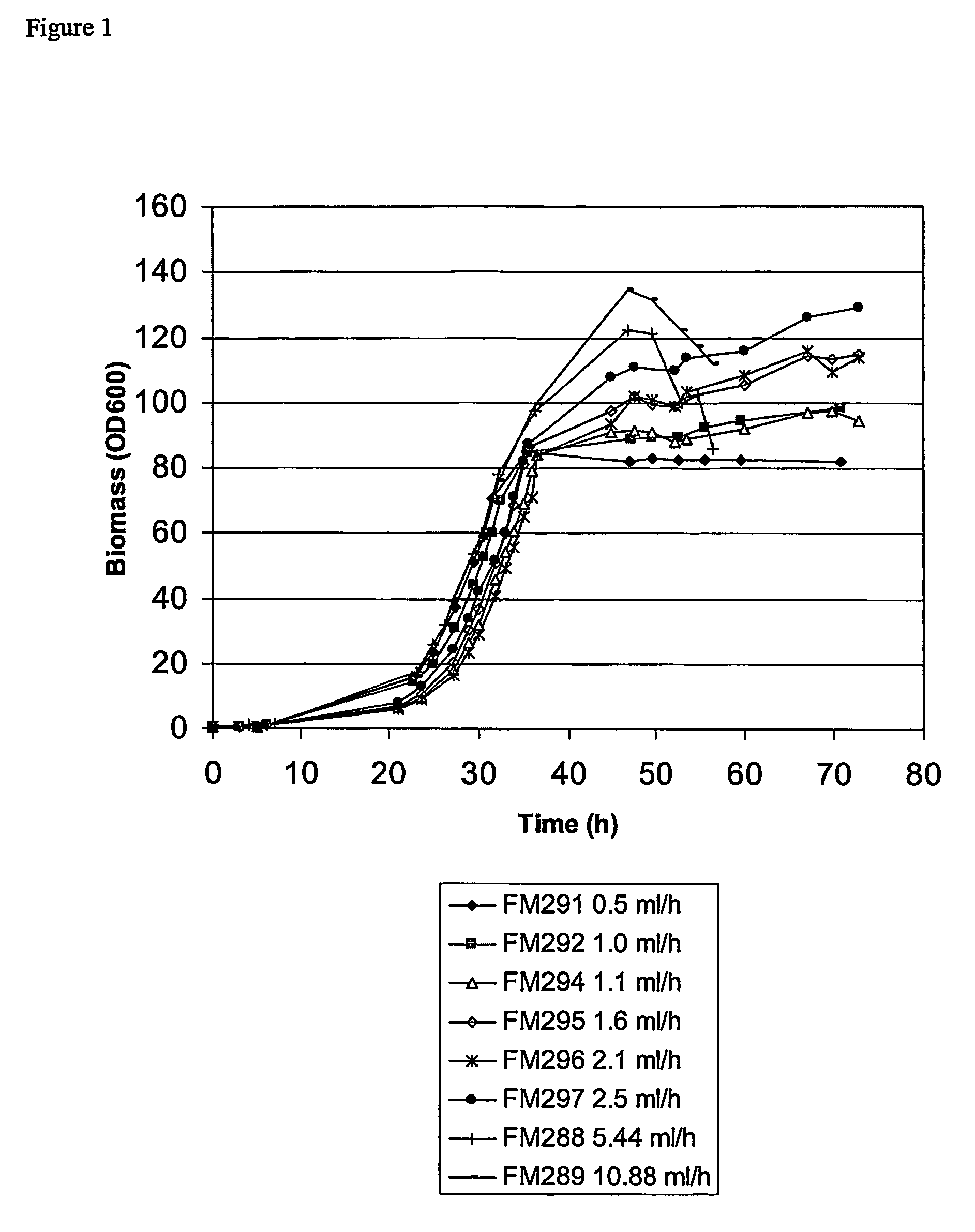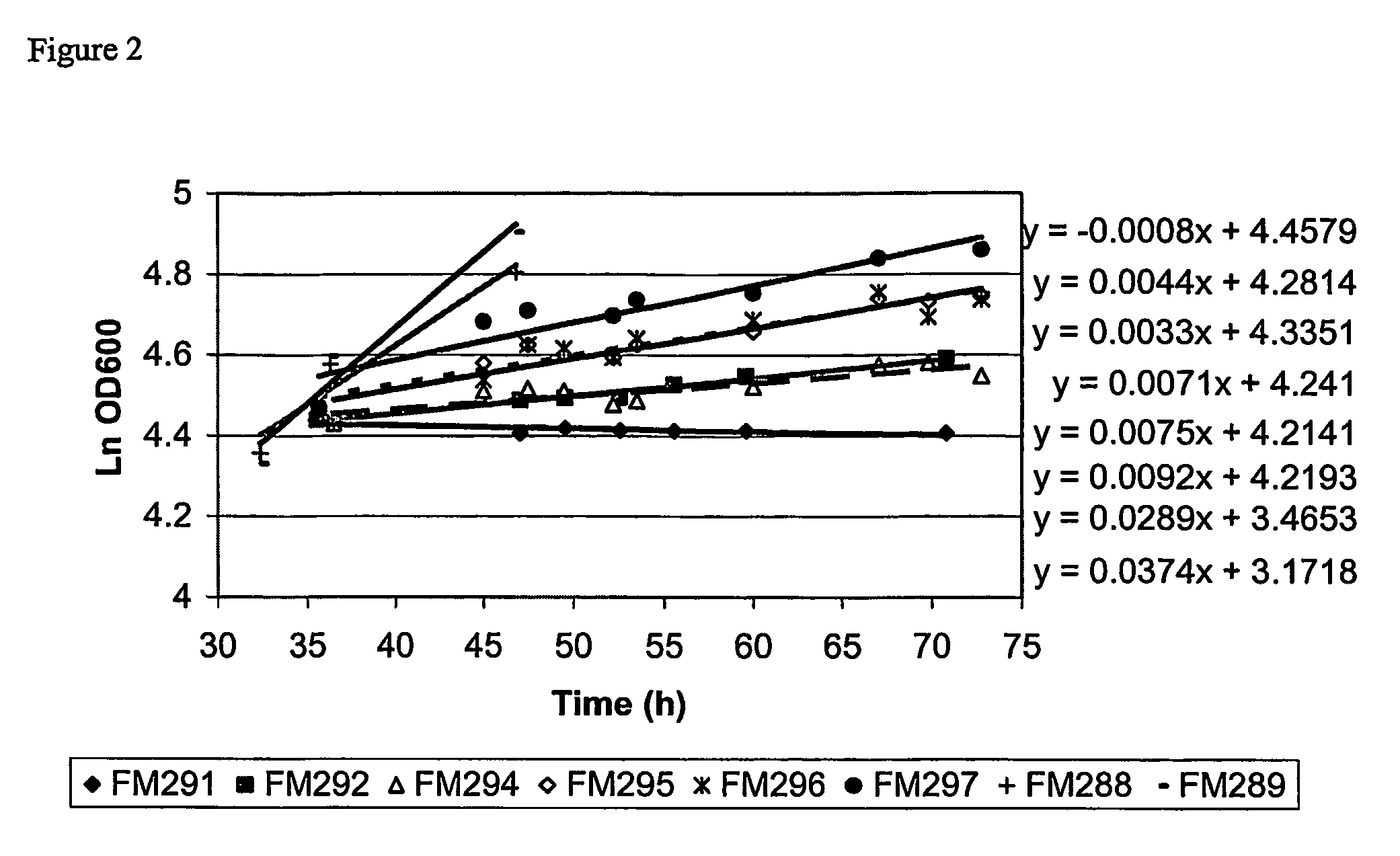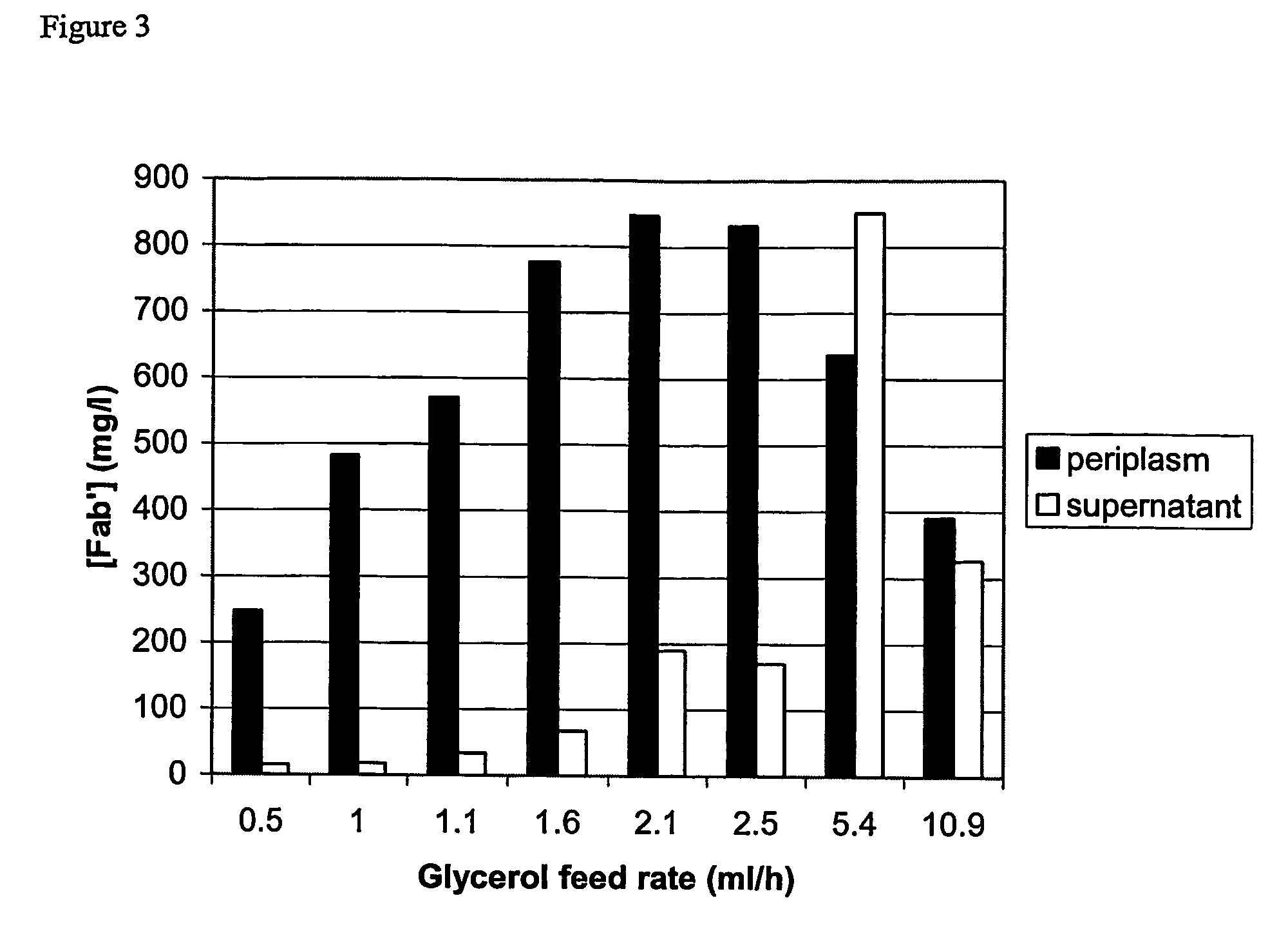Methods for producing recombinant proteins
a technology of recombinant proteins and periplasm, which is applied in the field of methods for producing recombinant proteins, can solve the problems of reducing the quality of periplasm protein, and reducing the yield of periplasm protein, so as to achieve the effect of increasing the quality and/or yield of protein produced
- Summary
- Abstract
- Description
- Claims
- Application Information
AI Technical Summary
Benefits of technology
Problems solved by technology
Method used
Image
Examples
example 1
[0042]Optimisation of partitioning and yield of Fab′A using a limiting glycerol feed to control post-induction growth.
Materials and Methods
[0043]Strain and plasmid. The strain used in this work was Escherichia coli W3110 (ATCC 27325) transformed with a plasmid which confers resistance to tetracycline and carries genes coding for the light and heavy chain polypeptide components of the Fab′ fragment, Fab′A. Each polypeptide is preceded by the E. coli OmpA leader peptide. Induction of expression from a single tac promoter results in synthesis and secretion of light and heavy chain polypeptides into the periplasm where a portion of the polypeptides fold and assemble to form Fab′.
[0044]The fermentation growth medium was based on SM6E medium (described in Humphreys et al., 2002, Protein Expression and Purification, 26, 309-320) with 3.86 g / l NaH2PO4.H2O and 112 g / l glycerol.
[0045]Inoculum. Inoculum cultures were grown in the same medium supplemented with 10 μg / ml tetracycline...
example 2
[0053]Optimisation of partitioning and yield of Fab′B by varying phosphate concentration to control post-induction growth rate
Materials and Methods
[0054]Strain and plasmid. The strain used in this work was Escherichia coli W3110 (ATCC 27325) transformed with a plasmid which confers resistance to tetracycline and carries genes coding for the light and heavy chain polypeptide components of the Fab′ fragment, Fab′B. Induction of expression from a single tac promoter results in synthesis and secretion of light and heavy chain polypeptides into the periplasm where a portion of the polypeptides fold and assemble to form Fab′.
Growth Media
[0055]The fermentation growth medium was based on SM6E medium (described in Humphreys et al., 2002, Protein Expression and Purification, 26, 309-320) with the NaH2PO4.H2O concentrations given in Table 2.
[0056]
TABLE 2Amount and concentration of NaH2PO4.H2Oused in Fab'B fermentationsConcentration ofFermentationNaH2PO4.H2ONaH2PO4.H2Obatch numberadded (g / l)(mM...
PUM
| Property | Measurement | Unit |
|---|---|---|
| concentration | aaaaa | aaaaa |
| concentration | aaaaa | aaaaa |
| concentration | aaaaa | aaaaa |
Abstract
Description
Claims
Application Information
 Login to View More
Login to View More - R&D
- Intellectual Property
- Life Sciences
- Materials
- Tech Scout
- Unparalleled Data Quality
- Higher Quality Content
- 60% Fewer Hallucinations
Browse by: Latest US Patents, China's latest patents, Technical Efficacy Thesaurus, Application Domain, Technology Topic, Popular Technical Reports.
© 2025 PatSnap. All rights reserved.Legal|Privacy policy|Modern Slavery Act Transparency Statement|Sitemap|About US| Contact US: help@patsnap.com



